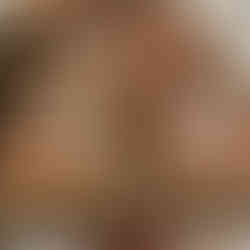Week 16 - Sculpture Workshop (CAST). Aluminium Casting.
- carldurban
- Feb 3, 2020
- 3 min read
Updated: Feb 12, 2020
This was ultimately what we were always working to. A cast in aluminium of one of our creations. The learning of the process, or processes, as part of the experience being as important as the finished piece. Having played with a few options in previous weeks I opted for the shape that could be seen as a shanty town or cave dwelling depending on how you looked at it. The actual shape had been slightly rounded by the process of making, the vacuum formed plastic but it still picked up most of the details and qualities I wanted to retain. In some ways it had simplified the shape and it had lost some of the rougher edges.

I had three different shapes to experiment with in the casting sand and it was about what I felt would make the most interesting shape. With the above shape it always going to be just a direct cast to see how it looked in aluminium but one of the other pieces I used as a shape to make several indentations in the sand, to develop the plaster cast into a new shape. I also had a third item that interested me as it was from a piece of clay I had grasped in my hands with my fingers pushed into the clay with my fist together.




Now for the pour. The process is a very physical thing, it's hot, heavy and smelly. As delicate as you may have wanted your items there is still a large element of chance as to how much of it will take. Will the sand retain the shape? Will the metal burn? Will the detail be retained. Will any new facets be discovered?
Once cooled we could see what the actual items looked like. There was a slight issue with the temperature of the metal on one of the pieces but to be honest I didn't really like the outcome. It was the piece that I had used to make a couple of interlocking indentations, thereby creating a new shape. It just didn't work for me, it didn't seem to resemble the original cast, neither had it taken the shape on to something more interesting. I therefore decided to keep the other two items and see how I could refine them by taking off any of the extra metal and polishing them. The feel of the weight was quite a satisfying thing, they felt solid, they had form, more so than when just plaster.
After a bit of hacksawing, filing and grinding I decided to polish the pieces with a stove polish that brought out the metal even more, even gave it a slight feeling of steel, the colour was greyer, colder. The filing and grinding was an interesting process in that you were finally shaping the piece and making decisions as to how far to take it as well as learning the process and seeing what the tools would do and and also what happened if you didn't have total control over them, there is a quite a fight going on as to what the Dremmel wants to do and what you want it to do.




Now I have gone through the whole process it would be interesting to go through this exercise again with the knowledge as to how each part of the process can affect the final outcome. Rather than trying to create something that you then have to keep changing as each process slightly altered the piece it would mean you could create something that would almost let the process happen and add to the final piece. Let the material be the material it is and highlight its qualities.































Comments